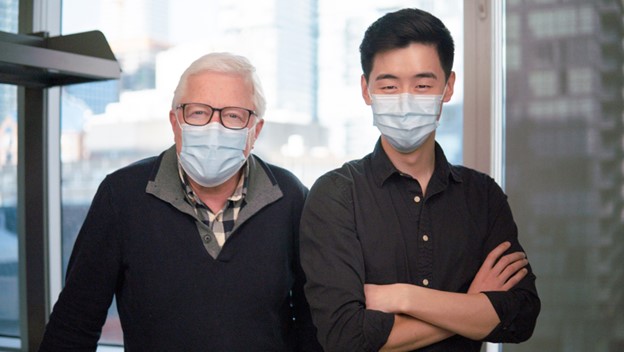
Acute myeloid leukemia (AML) is a common blood cancer with highly heterogenous pathophysiological and clinical characteristics. Numerous pre-clinical efforts have been made to define more precise and effective treatment options for AML and this has resulted in many new promising therapies being evaluated in clinical trials. However, patient responses to these therapies have been shown to be variable and there is a lack of biomarkers to guide their use.
Recently, a study titled “A cellular hierarchy framework for understanding heterogeneity and predicting drug response in acute myeloid leukemia” by researchers at the Princess Margaret Cancer Centre was published in Nature Medicine. In this study, the authors explored how disease heterogeneity could be associated with AML cell response to therapies by determining the leukemia cell hierarchies from samples of more than 1,000 AML patients. Importantly, the cellular hierarchy composition revealed four major AML subtypes which have distinct features in terms of AML genomics, patient survival and drug response. These findings will provide avenues to better understand disease biology and to develop biomarkers for personalized medicine in AML. Further details about the paper can be found in a recent UHN Research report.
Rising Stars invited Andy Zeng, the first author of the study and an MD/PhD student at the University of Toronto, to tell us about the work behind the paper.
What is your academic background?
I grew up near Vancouver, BC and completed my BSc in molecular biology at Simon Fraser University. Throughout my undergraduate degree, I had the privilege of performing research at the BC Cancer Agency as well as at the Institute for Research in Immunology and Cancer at the University of Montreal. These early research experiences sparked a passion for cancer research and also taught me a combination of wet-lab and computational approaches. In 2017, I joined the combined MD/PhD program at the University of Toronto and am now completing my PhD studies under the supervision of Dr. John Dick at the Princess Margaret Cancer Centre and gearing up to return to my medical studies.
What was the biggest challenge you have encountered behind the scenes of this study?
This study actually started off as an exploratory side project, so one of the challenges was making the time for it amidst other projects and convincing both myself and John that it was interesting enough to warrant becoming a paper! In the beginning, I just interrogated every dataset and phenotype I could think of, and there were many moments early into the process where we felt like we were sitting on a collection of interesting data with no clear underlying story. After our drug response data started coming together, and after countless brainstorming sessions with members of the lab, we developed a better sense of the narrative of the paper and how to position our data within the context of the field. It took countless iterations of brainstorming and re-writing before we felt comfortable enough to even submit the story.
What was the most important lesson you have learned during this study?
One thing I’ve come to appreciate is the balance between going down experimental/analytical “rabbit holes” and staying true to the overarching vision of the study. Every question answered begets more questions, and often I feel the urge to chase that chain of questions in perpetuity. From this study, I’ve realized the importance of stepping back and thinking about the broader theme of our study and using this theme as a map to decide which questions to ask and how far to go down each “rabbit hole” before I can confidently make a claim that contributes to the developing story. Looking back, I realized that much of the data we presented in our paper actually came from analyses that we performed after writing an initial draft of the paper and realizing exactly which questions we needed to ask based on our broader claims. In this way, writing the paper is actually part of the experimental process!
What was the best experience, moment or highlight you would like to share for completing this study?
It has just been so exciting to receive emails about the paper and know that people are actually reading it! While getting accepted for publication and seeing it out in print is exciting, knowing that it may actually impact how others in the field think about AML is by far the most rewarding aspect.
What is your plan for your future training and career in cancer research?
After this summer, I will be returning to medical school and getting back into the clinical world while wrapping up my thesis. After medical school, residency, and fellowship(s), I hope to continue along the clinician-scientist path and integrate my cancer research with patient care.
Connect with Andy:
Email: andy.zeng@uhnresearch.ca
Twitter: @andygxzeng
Posted on:
